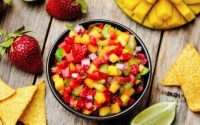You're Probably Eating Some of the Most Unhealthy Foods in the World
Even though most of us get a baseline education in nutrition — or at least an outdated version of the food pyramid — in school, it’s easy to go through life without a clear understanding of what is and isn’t healthy. It doesn’t help that the clever marketing of food corporations looking to make more money advertises healthier options, but those foods are full of artificial ingredients, dangerous artificial sugars, and processed ingredients your body doesn’t know how to digest. The following are 15 of the unhealthiest foods on the planet, including an item that’s often recommended for its alleged health benefits (No. 11).
1. Coffee creamer
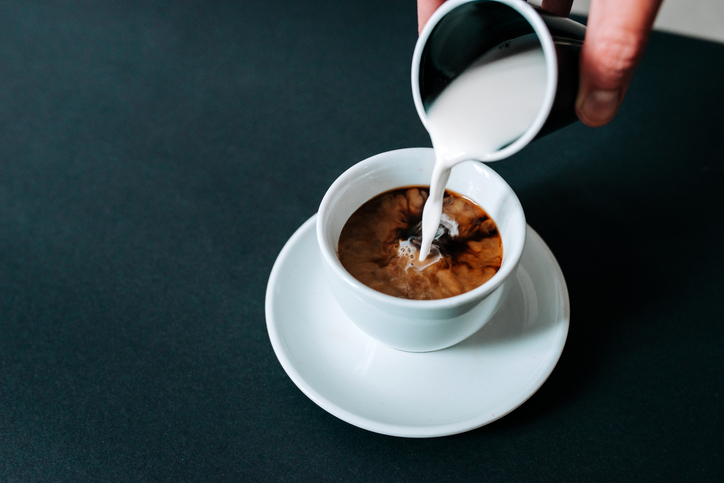
Troubling ingredient: Canola oil
A lot of people need coffee first thing in the morning. But have you ever peeked at the ingredients on your fancy coffee creamer before pouring it in your coffee? You might be surprised to find the first three ingredients are often water, sugar, and then canola oil. Why is canola oil bad for you? Well, it has very little nutritional value, and it does have unhealthy fats.
Instead try: Half and half, regular cow’s milk, or a plant-based creamer like Califa Farms
Next: What will our sandwiches become without this tasty ingredient?
2. Bleached white flour bread
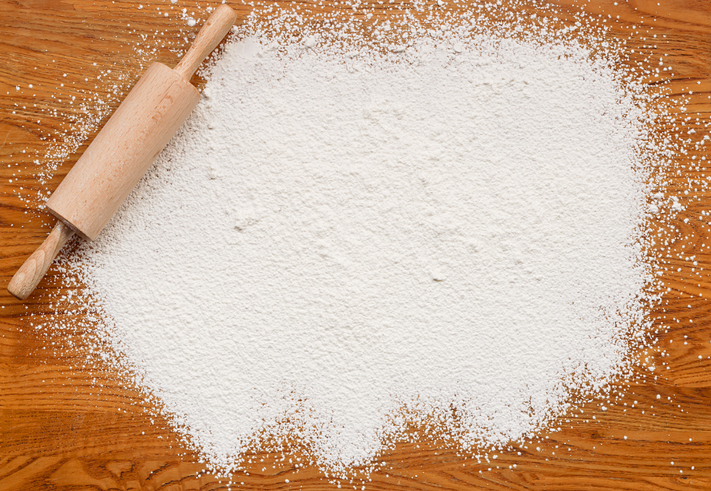
Troubling ingredient: Bleaching chemicals such as azodicarbonamide
Grabbing two slices of white bread sure takes you right back to your childhood. But there are reasons to think twice about eating white bread and no, it’s not just the carbs since you can find carbs in all bread. What is particularly scary about white bread are the bleaching chemicals they use to make the flour white. The Center of Science in the Public Interest cites azodicarbonamide as carcinogenic.
Instead try: Whole grain or whole wheat bread
Next: You may have thought this was a healthy choice, but you were sorely mistaken.
3. Fruit juice
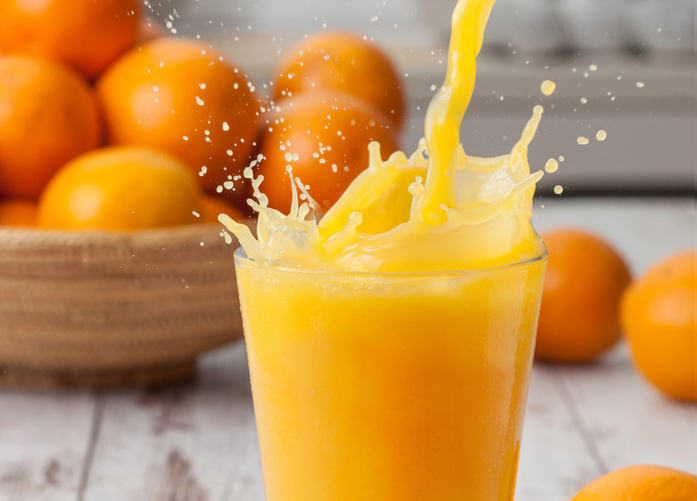
Troubling ingredient: High fructose corn syrup or just lots of sugar
You may think serving your kids a glass of juice in the morning is helping them get an extra serving of fruit. But the truth is, you aren’t doing them, or yourself if you are a juice drinker, any favors. Even if you checked the ingredients and made sure to get juice with no high fructose corn syrup or added sugar, juice is still full of sugar. Consider this: one orange contains nine grams of sugar, but it takes four oranges to make only one 8 oz. cup of orange juice. So, you can see how the sugar content quickly multiplies.
Instead try: Make infused water by adding orange slices to a pitcher of water and chill
Next: This vice is not worth it when you learn about the effects.
4. Diet soda
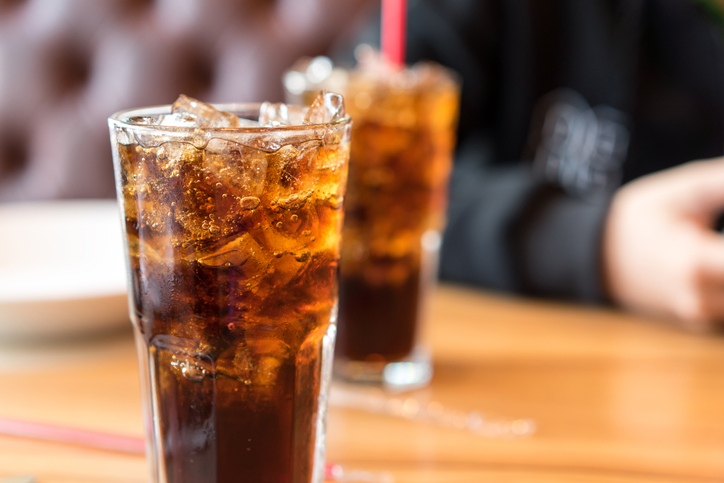
Troubling ingredient: Aspartame
It’s so tempting to reach for the diet soda instead of regular pop if you’re trying to cut calories and lose weight. But with diet soda, it is vital to consider the cost. Your zero calorie drink is full of other harmful ingredients. Aspartame is a known carcinogen. And aspartame has the opposite effect on your weight loss goals since it causes your blood sugar to spike, triggering your body to store fat.
Instead try: Sparkling water, coffee, infused water, or even a treat like dark chocolate
Next: You may have to wrestle this next food out of our cold, dead hands.
5. Cured bacon and sausage
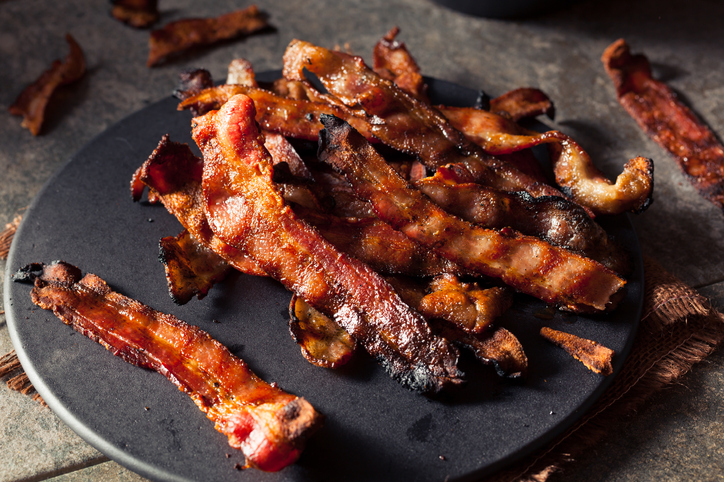
Troubling ingredient: Nitrites and nitrates
Everyone loves bacon. If you don’t, we don’t want to be your friend. Jokes aside, bacon and sausage can be bad for you due to the way they are processed. The processing creates inflammatory compounds, and nitrates and nitrites cooked at high heat can be carcinogenic.
Instead try: Cook your breakfast meats at lower temperatures and look for uncured varieties
Next: Another breakfast staple hits the “Do Not Eat” list.
6. Sugary cereals
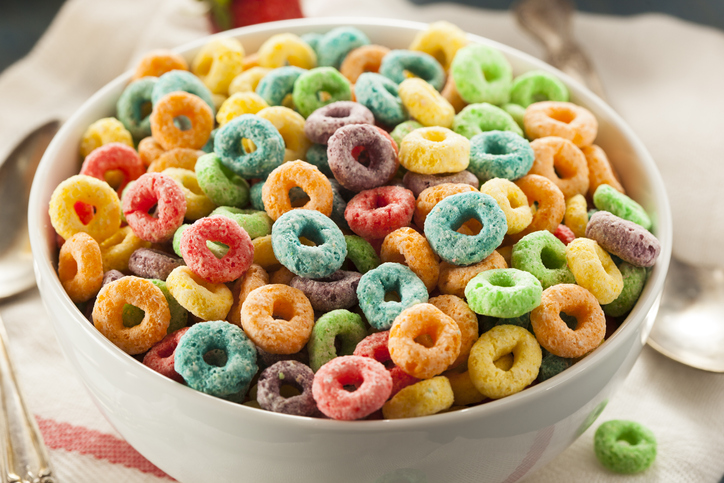
Troubling ingredient: Added sugars, refined carbs, and BHT/BHA
Let’s start with the sugar content. You might think cereal is better for you than a donut, but you’d be wrong if you like to fill your bowl with Fruity Pebbles or Cinnamon Toast Crunch. Plus, some cereals have additives (butylated hydroxytoluene and butylated hydroxyanisole) that are banned in most other countries as they are considered carcinogenic. There’s no need to put that in your bodies, friends.
Instead try: Oatmeal with fresh berries and honey or maple syrup for sweetness
Next: This is hard to eliminate, but if you can cut it down, you are making great strides.
7. White sugar
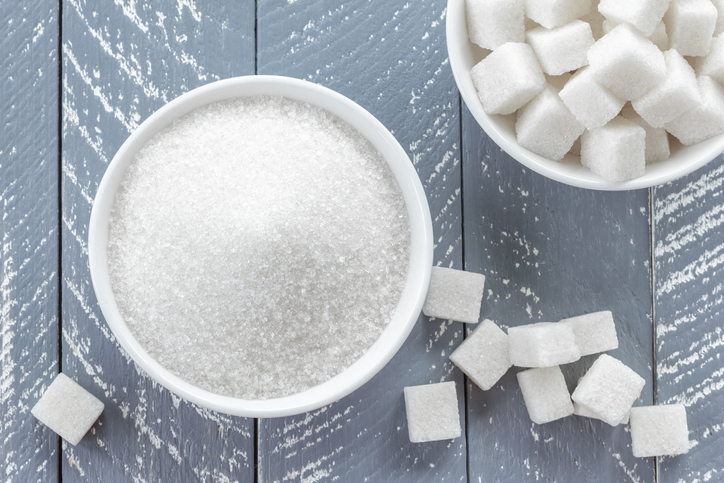
Troubling ingredient: Sugar
We know we’re kind of stating the obvious with here, but what wasn’t so obvious until recently it that sugar is a far more serious cause of obesity than fat. According to Pew Research, the average American eats 90 or more grams of sugar every day, while the recommended amount remains at 50 grams per day. The World Health Organization has an even more restrictive recommendation at only 25 grams per day.
Instead try: Maple syrup, honey, erythritol, monk fruit extract, or Stevia
Next: Celebrating birthdays will take a few extra steps if you eliminate this unhealthy food.
8. Canned frosting

Troubling ingredient: Artificial coloring, soybean oil, propylene glycol
As with many foods from the center aisles of the grocery store, there are a lot of unhealthy added ingredients in frosting. Propylene glycol found in many frostings is connected to kidney failure. And artificial colors (even in your white frosting) are linked to things as mild as hyperactivity to as severe as cancer.
Instead try: Making your own frosting is super easy and even more delicious
Next: If you aren’t a label reader, this next unhealthy food may shock you.
9. Pancake syrup

Troubling ingredient: High fructose corn syrup and caramel coloring
Paleo fans tout maple syrup as the ideal white sugar replacement. But don’t be fooled when you pour Mrs. Buttersworth or Aunt Jemima on your pancakes. You are eating straight high fructose corn syrup. And the caramel coloring used is considered by many to be a potential carcinogen.
Instead try: Pure maple syrup (yes, it will be more expensive but completely worth it!)
Next: This next food is unhealthy, but for a reason other than what you would think.
10. Fast food
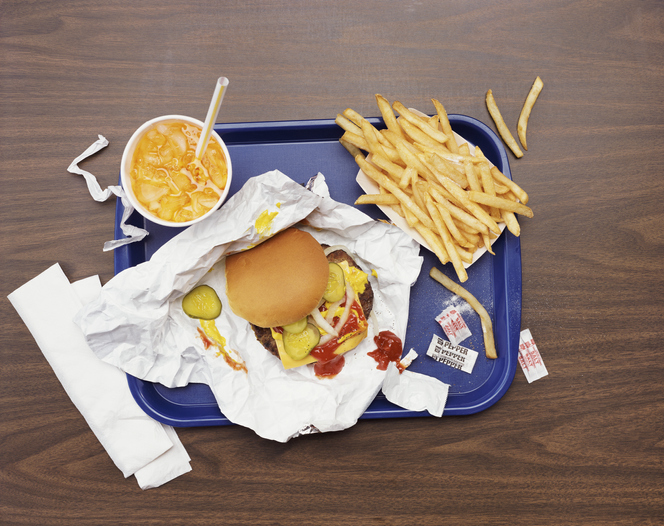
Troubling ingredient: Phthalates
Sure, there are plenty of reasons to avoid fast food — many fats, tons of refined carbs and sugars, large portions, and the list goes on. But one reason you probably aren’t aware of is the danger of phthalates. Phthalates are like BPA if you are familiar with it. The concern is, hazardous chemicals used in the wrapping paper on your burger leach from the packaging into your food. So you end up consuming substances that were never designed for human consumption and are potentially cancer-causing.
Instead try: If you need to or want to eat out, try somewhere fast casual where your food isn’t wrapped up
Next: You might have been trying to fuel yourself or your young athlete with this, but it’s no good.
11. Sports drinks
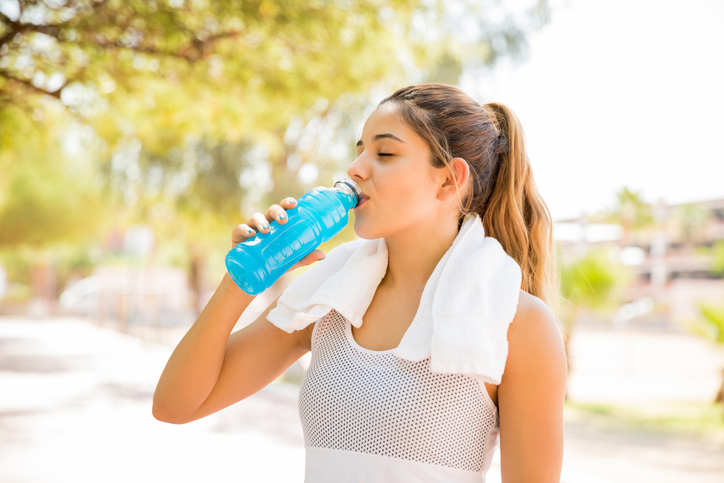
Troubling ingredient: Sugar and artificial coloring
You’ve probably seen some of the biggest names in athletics endorsing sports drinks, but the truth is they don’t drink it themselves. Or at the very least, they drink a very diluted version. The reason why? The high amount of sugar in sports drinks is actually dehydrating! It takes your body too much energy to process all that sugar for it to be worth any of the benefits. Plus, you end up drinking a lot of calories without realizing it.
Instead try: Add a pinch of salt to replenish electrolytes to water infused with fruit
Next: This spread used to be considered more healthy than its alternative, but now we know better.
12. Margarine
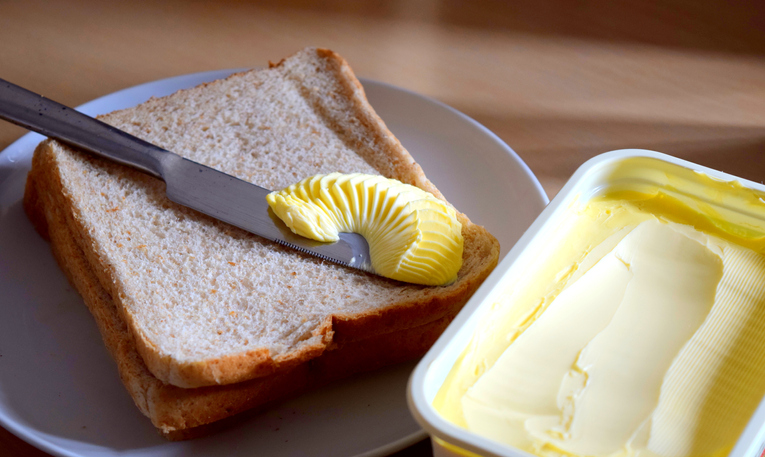
Troubling ingredient: Palm oil
Butter used to have a bad reputation, with consumers leaning to margarine as a substitute. But palm oil is a main ingredient in margarine, which is high in unhealthy fats like saturated fat. There are a lot of busted myths out there about the horrors of margarine. Still, it’s best to steer clear of the stuff or use sparingly.
Instead try: Olive oil
Next: This is a quick dinner (and college student) staple, but it’s an unhealthy choice.
13. Frozen pizza
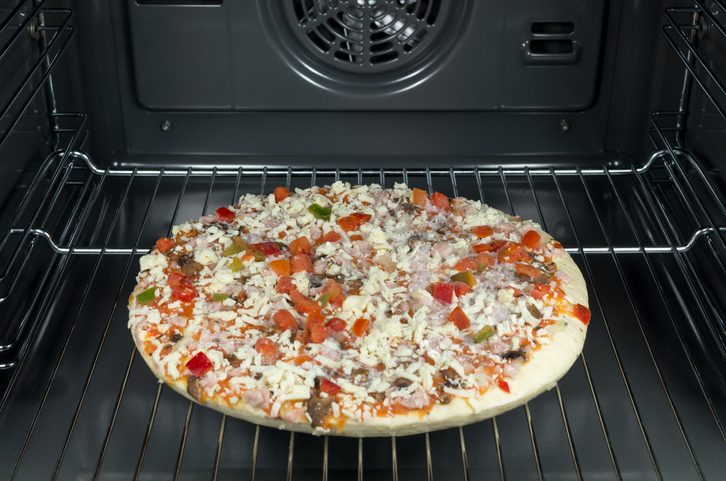
Troubling ingredient: Food additives and high sodium
We’ve all been in the position when it was just easiest and cheapest to throw a frozen pizza in the oven for a quick and painless meal. What you probably aren’t thinking about when you eat a few slices of one of these frozen entrees is the sodium level. Red Baron’s Classic 4-Cheese Pizza has a shocking 720 milligrams of sodium per serving. And let’s be honest, most of us rarely stop at one portion. To put it in perspective, the daily recommended amount of sodium per day is 1,500 milligrams per day. That’s nearly half of your daily salt intake in one meal.
Instead try: Making your own pizza. Freeze an extra for that day you need a quick dinner
Next: This tasty appetizer needs to move to your, “occasional treat only” list.
14. Onion rings
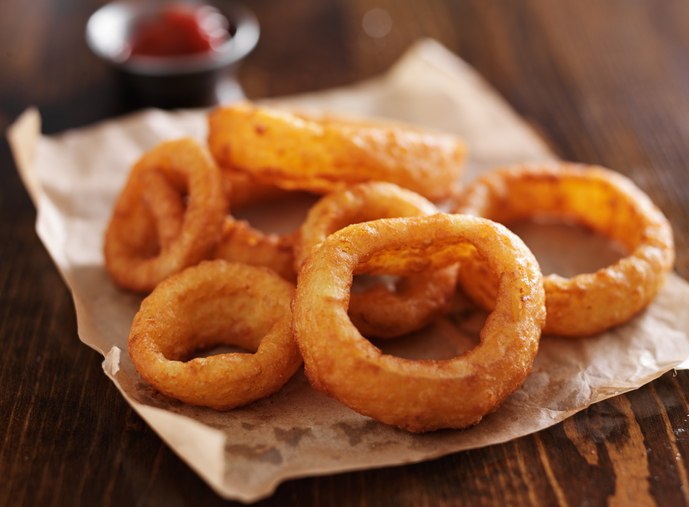
Troubling ingredient: Sugar and saturated fats
Fried foods are really never good for you because of the high fat content that is inevitable with deep frying any food. But one reason why onion rings are even more offensive than some of their fried counterparts is their sugar content. It might be a fried vegetable, but it isn’t doing you any favors.
Instead try: Fried calamari (at least you’re getting some protein!)
Next: This last food won’t be much of a surprise but will still make you sad to cross it off your list of regular munchies.
15. Nachos
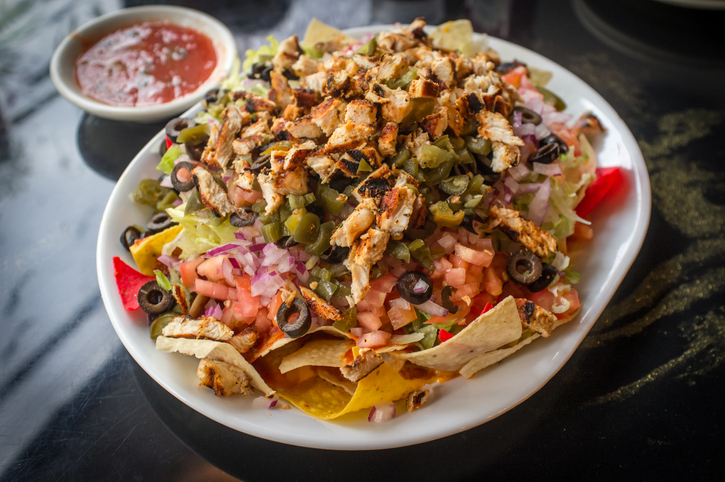
Troubling ingredient: Sodium
It’s not that any of the ingredients in nachos are that bad in and of themselves. But when you add them all together, you’re piling on a ton of calories and even more sodium. We all need salt to live, but too much salt puts undue stress on the heart and increases blood pressure. Nachos at restaurants are the biggest offenders.
Instead try: Making nachos at home where you can control the ingredients and portions
Source: Read Full Article


